
Workflow Orchestration
WFM - Workflow Manager
File-Based Workflow Engine

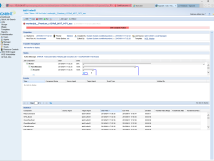
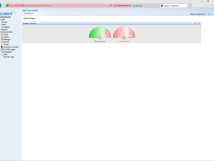

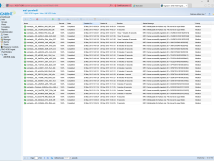
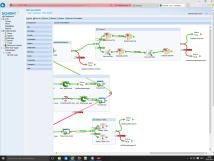
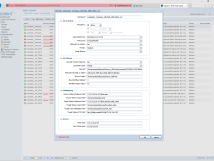
The business process in modern media production environments is based on file-based workflows. It begins at the camera where the video and first metadata assets are gathered. In the second step, these assets are ingested into the post-production chain and more metadata is requested—triggering the first video file processing. Along the post-production chain, these sources are refined. So first, an editorial review and selection happens, followed by cutting, animation and graphics, sound, and any subtitling. Finally, a finished asset arises to broadcast "on air".
The content is provided as "Catch-Up TV" or "Video-on-Demand" in libraries shortly after airing or even parallel to the linear distribution. For such offerings on the so-called "second screen" or "multi-screen", more metadata and essences are required. The libraries offer at least a preview and a brief content description. Often there is a trailer, storyboard, long description, and more information about the provided clip available. Also essential for providers and their suppliers are exploitation rights and pricing models.
So-called aggregators form asset packages. These are occasionally processed by other service providers and often made available to multiple propagators. The latter, in turn, usually have several suppliers.
The business processes described begins in the studio and ultimately end on the devices of the viewers or users. At the beginning of the described process chain, the focus is on the processing of video materials and towards the end outweighs the need for metadata aggregation and delivery. Basically, it's always a file-based, automated, self-managing workflow.
Process Oriented Media Workflow
We take a process-oriented view of media production environments. Manual, fully, and partially automated processes are mapped by our workflow system. This provides task-specific interfaces for operators. It has connections to all relevant components in the production environment. It controls and transfers video essences and metadata between the units. There is a focus on ingest into production, post-production, or content management systems, as well as archives, processing systems, non-linear publishing, and delivery systems. "On-Air" Broadcast is covered as well.
The strength of our workflow system lies in its openness to connect any software in media IT environments and its flexibility to execute required business logics.
An overview of the WFS features:
Features
- Workflow engine with full visibility into the entire process
- Controls different transcoding farms
- Workflow Customization
- User Interface for Monitoring
- Active Directory integration
- Fully featured API
- AD integration
- Signiant UDP accelerated File Transfer
WFS Packages:
Workflow Manager Light OEM
The Workflow Manager Light is an entry-level Solution for basic Workflows with the following feature set and limitations:
- Supports up to 3 Workflows
- Supports up to 10 Concurrent (Running) Jobs
- No Workflow Customization
- User Interface for Monitoring only
- Upgradeable to Medium or Full version
- Only available as full managed Solution with customized pre-configured workflows
Example Use cases:
Expands the out of the box functionality of a transcoder/MAM etc. by making use of its APIs.
Workflow Manager Full OEM
The Workflow Manager Full is recommended for large scale Workflow Integrations. On top of the Medium version it offers:
- Fully Customizable „generic“ Workflows
- Up to 10 Agents per Manager
- Up to 80 Concurrent (Running) Jobs per Manager
- Unlimited number of Scheduled Jobs (e.g. „Watch folders“)
- AD integration for Administration and User Management
- High Available Workflows by doubling the Manager
- Active-Active High Availability
Workflow Manager Medium OEM
The Workflow Manager Medium acts as a base for x-dream-media's Pre-Integrated Solutions:
- Only available as full managed Solution (including customized pre-configured workflows)
- Up to 10 Scheduled (e.g. „Watch folders“) and 50 concurrent (running) Jobs
- Up to 2 Agents (Workers)
- Active Directory integration for accessing Job Reporting Pages
- Fully featured API for scheduling and generating Jobs (REST and SOAP)
- High Available Workflows by doubling the Manager
- Active-Active High Availability
Full Signiant Manager (non OEM)
Once you’ve built a production eco-system based on x-dream-media’s Workflow Solution but need one of the following features, you are entitled to an upgrade to the fully featured version from Signiant:
- Signiant UDP accelerated File Transfer
- Up to 15 Agents (expandable)
- Unlimited Scheduled Jobs (e.g. Watch folders)
- Up to 80 Concurrent Jobs
- Fully featured API, Active Directory
- High Availability (Active/Standby)
Comparison
The following comparison table gives an overview of x-dream-media’s Workflow Solution and points out the differences to the fully featured but more cost-intensive version from Signiant.
| Light Workflow OEM | Medium Workflow OEM | Full Workflow OEM | Full Signiant (non OEM) | |
|---|---|---|---|---|
| File Transfer: | ||||
| UDP Accelerated Signiant | x | |||
| FTP/Windows/Linux copy etc… | x | x | x | x |
| Job Features: | ||||
| Job scheduling | x | x | x | x |
| Job Resource Management | x | x | x | x |
| API (submit Jobs) | x | x | x | x |
| API (all other) | x | x | x | |
| Number of jobs: | ||||
| Scheduled | 3 | 10 | unlimited | unlimited |
| Concurrent | 10 | 50 | 80 | 80 |
| UI Features: | ||||
| UI for Admins (the Manager UI) | x | x | ||
| UI for Users (e.g. a single job view) | x | x | x | |
| AD integration | x | x | x | |
| Workflow editing | x | x | ||
| Other: | ||||
| Max. Number of Agents | 0 | 2 | 10 | 15 |
Connector Components
The so-called Components are plugins to the Managers+Agents. They are either the actors or the connectors to third-party software products. That way, they retrieve audio visual content or metadata from ingest systems, archives, file systems, and databases. They are used to control processing software like transcoders, re-wrappers, audio processors, standard converters, QC tools, file correcting tools, virus scanners, etc. Once processed, they enable the file transfer and checkIn to post-production environments. And finally, they upload the content to CDNs and the checkIn to CMS or alternatively to playout and archiving. There is a continuously growing list of Connector Components from x-dream-media for Signiant’s Manager+Agents as well as our Workflow Solution:
- Harmonic Promedia WFS and Carbon
- Telestream Vantage
- Capella Systems FTC Cluster
- Quantel/Snell Alchemist OD
- Dalet/Amberfin iCR
- Minnetonka Audio Tools Server
- Emotion Systems Engine
- Avid Interplay
- Quantel sQ *
- Interra Baton
- Vidcheck Vidchecker
- Textronix/Digimetrix Aurora *
- Cube-Tex MXF-Legalizer
- BBC BMX Tools
- AVG Anti-Virus
- Kaltura Backoffice
- Subshell Sophora
- Akamai CDN
- Alcatel Lucent Cloud DVR
- Aspera FASP
All WFM related documentation:
Brochures
- WFM product brochure (download)
The [product name] related HowTo videos:
X-Dream-Media
Software integrator with an entire commitment to media IT, developing its own software products for file-based workflows and asset management. Part of the x-dream-group.
Based in Germany.
The Team

Stefan Pfütze
Managing Director and co-founder
Harald Jordan
Technical Director

Michael Weber
Senior Developer





